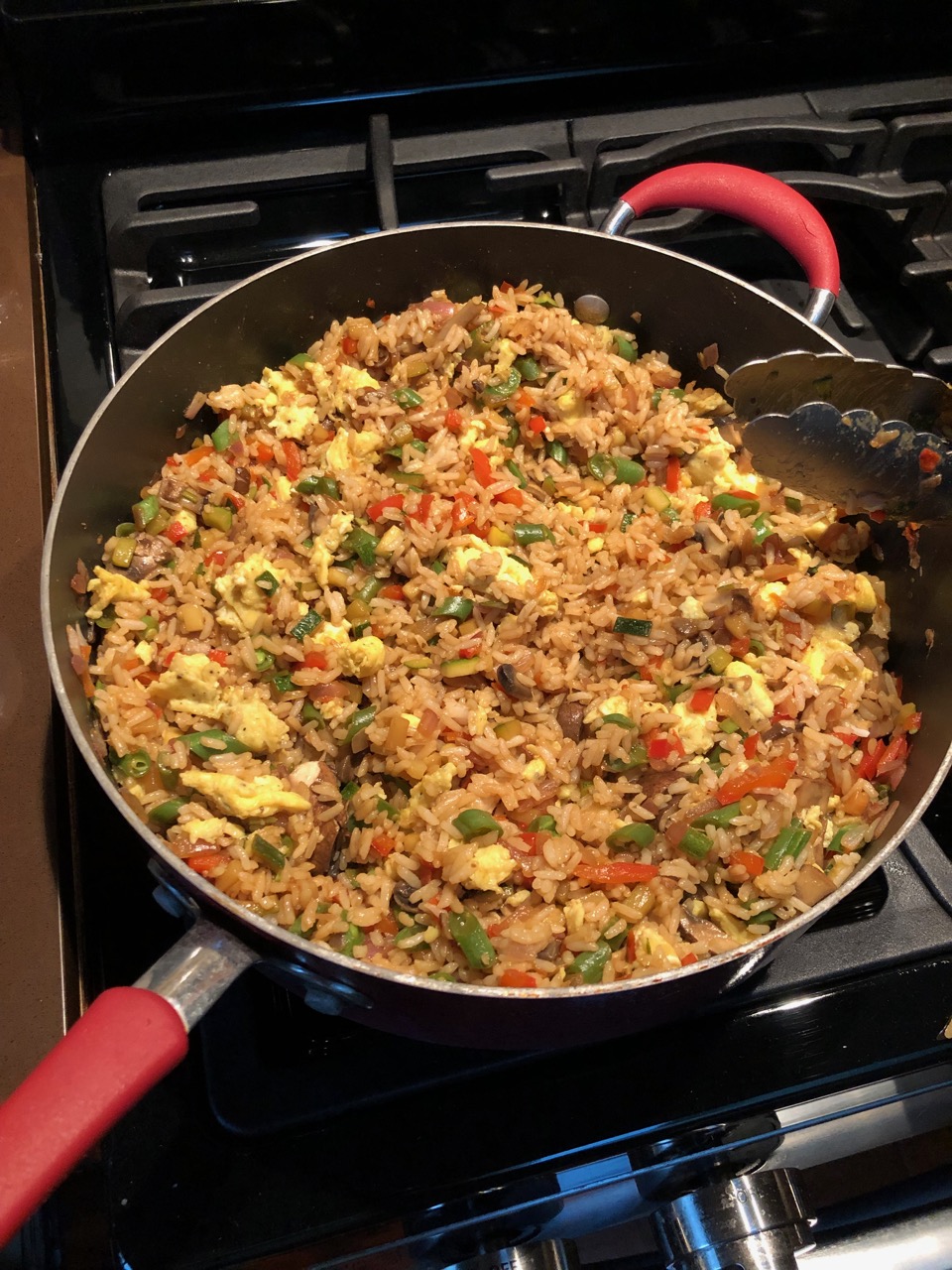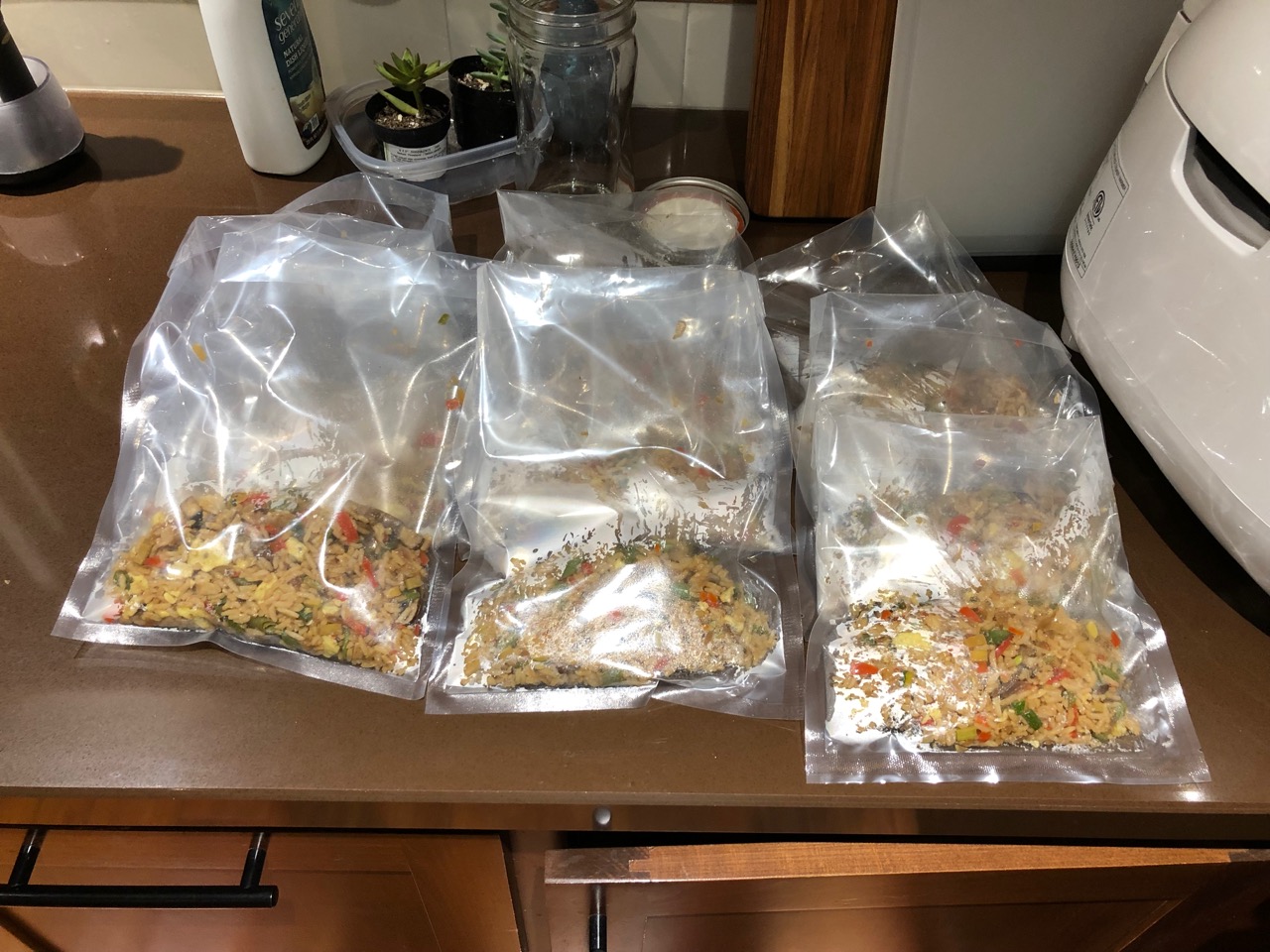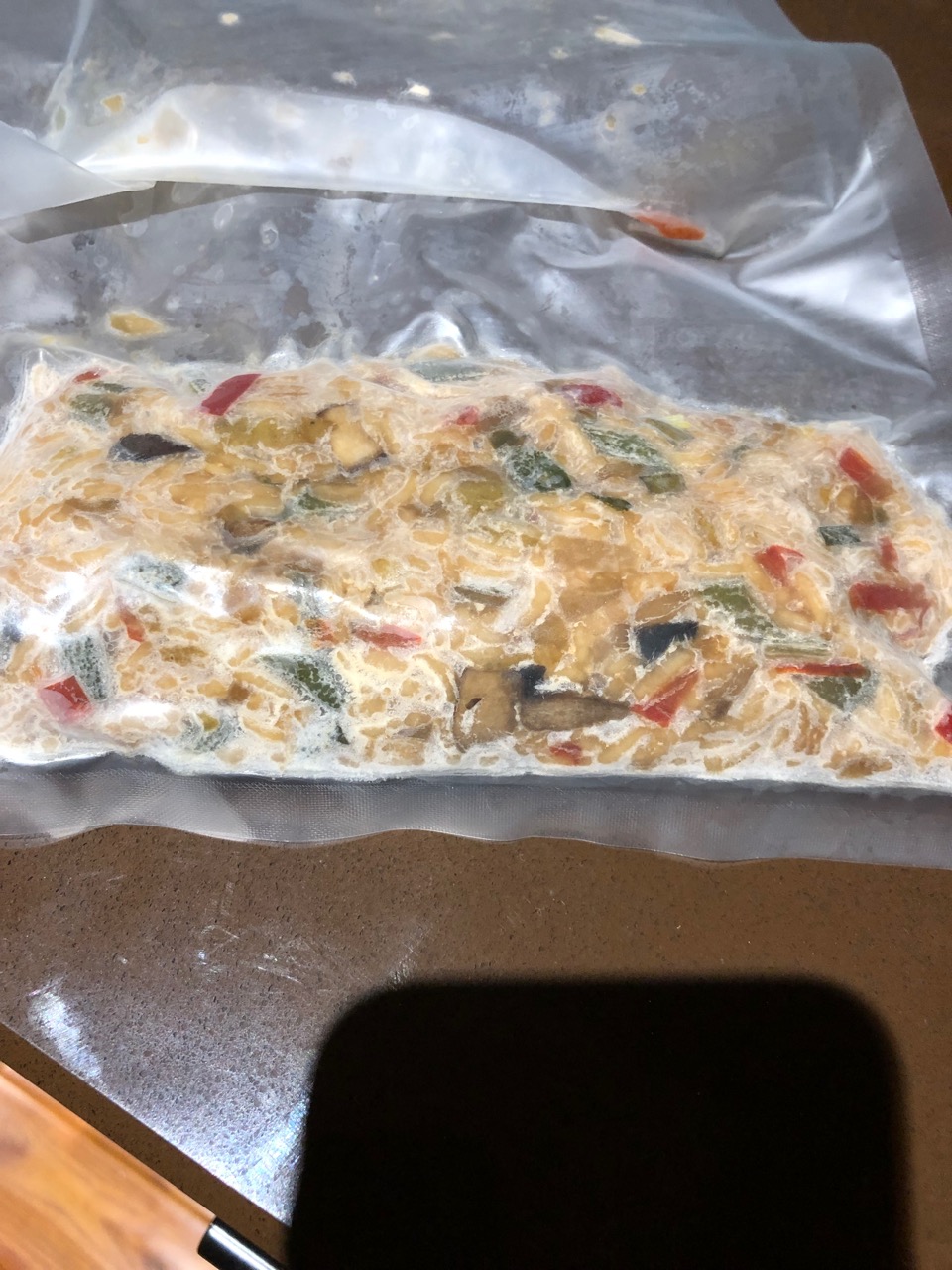POSTS
Vacuum sealing and freezing of vegetarian fried rice
This is one of the more successful experiments in an ongoing examination of what foods’ taste and texture preserve well under vacuum sealing and freezing. I’ll write up less successful ones later to steer you away from the pitfalls around vacuum sealing and freezing.
Unlike most science experiments, I actually get to eat, and for this particular one, enjoy the results.
On the experiment
In all of these experiments, the questions I want to answer are for a given ingredient,
- What ingredients keep their texture under initial vacuum sealing and freezing?
- What ingredients maintain their texture over time?
- What ingredients’ flavors maintain over time?
I think these can be considered separately by ingredient, but some combinations, e.g. marinade and meat, could be considered together for how they change over time.
I used this recipe for vegetarian fried rice with some modifications:
- I used 360g dry weight of white rice cooked as glutinous fashion in a Cuckoo pressure cooking rice cooker, cooled, and refrigerated overnight. The refrigeration in a low humidity environment resulted in a very dry rice that would crumble apart easily when rubbed between my hands.
- I added 1⁄2 zucchini quartered and sliced 3 minutes before end
- I added 4 mushrooms 3 minutes before end
- I increased to 3⁄8 cup soy sauce
- I did not add bell pepper — I forgot to get it.
- I did not add sesame seeds garnish.
Before sealing and freezing, the freshly cooked fried rice was good. It had a good texture overall and the flavors were strong.
This is a winning meal for a number of reasons. Home made fried rice is cheap and you can use better ingredients than you would get in a fast food restaurant. My per-meal cost worked out to less than $2 ingredient cost per serving. Most of the cost was rice and eggs. It took me about 90 minutes altogether to cook and package the meals. The meals can be reheated from the freezer in 20 minutes in an 80 degree Centigrade (176 Fahrenheit) water bath.
What food textures and flavors keep well under freezing and vacuum?
Immediately (less than a week) after freezing,
- Green beans are still crunchy with flavor
- Eggs still have texture and flavor
- Carrots are still hard
- Rice still has good body
- Mushrooms still have body and flavor
- Zucchini is still kind of crunchy with flavor
How does this all keep up over time?
- On June 26, meals were initially vacuum sealed and frozen
- On September 29, about 90 days later, the overall texture and flavor is still good. Mushrooms, green beans, and eggs still have good texture and flavor. I don’t remember detecting zucchini. I think the zucchini may be losing its texture. It definitely isn’t the same as when it was reheated when less than 2 weeks old, but this meal combination has potential for keeping for the long term.
On equipment
I use the Joule Sous Vide water circulator to warm up my water bath, but a cooking pot of water on lowest range heat should work if the water can be kept around a temperature that won’t continue to cook the food, but warm enough to defrost and heat it in reasonable time. I target 80 degrees Centigrade (176 Fahrenheit).
I use the VacMaster VP215 chamber vacuum sealer and 3 mil 8x10 inch pouches (about 9 cents per bag) which admittedly is a bit overkill for many home vacuum sealing uses, however the one area a chamber vacuum excels is its ability to vacuum seal food with high amounts of liquids such as sauces or soups.
Before that I was using reusable vacuum bags with the Vacuvita Vacuum storage system. I stopped using resealable suction bags for three reasons:
- The vacuum achieved by these reusable bags is much less strong than with a chamber vacuum machine. Also, the bags themselves lose their vacuum over a period of weeks and as the bags age, their one way air valve tends to leak more quickly and easily. If you want to have a lasting seal for more than a couple of weeks, you need a bag with no valves – like a heat sealed bag. The reusasble bags are about 87 cents each which means they would need to last for at least 9 uses to compare to the 9 cent, 3 mil single use bags. They lost their sealing integrity after only a few uses.
- Suction sealers cannot deal with foods containing liquids. While the Vacuvita suction head is designed to avoid drawing in liquids that could cause damage to the vacuum pump, I still see some moisture drawn up into the vacuum hose. After sealing, the bags need wiping down afterwards as liquids inevitably are drawn up through the hole in the bag as it compresses.
- After use, the bags need to be washed and dried with a bit of care – I used a jar full of BBQ skewers to keep the bags upright while they dried. So, while bags can be reused, in all it requires a bit more effort.




